Sharon Anenas
Eco Fashion Show in Gulu
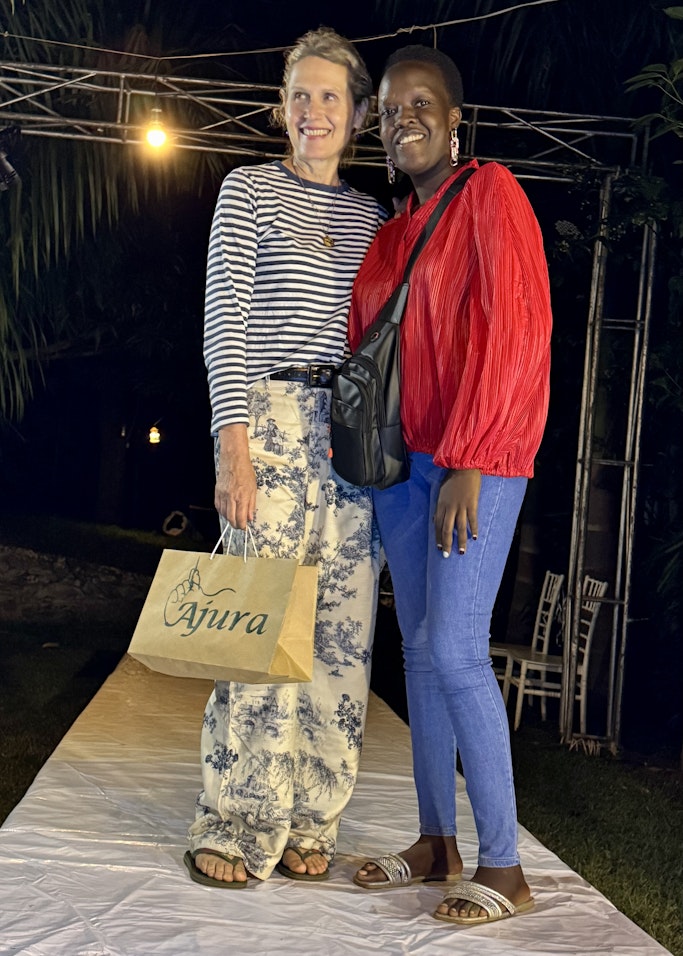
© Susanne Barta
© Susanne Barta
Ich wollte unbedingt einmal dabei sein, wenn Sharon ihre Mode präsentiert. Im Dezember 2024 hat es geklappt. Ich habe die Ecofashion Designerin aus Norduganda virtuell über eine Freundin kennengelernt, die sich dort für ein soziales Projekt engagiert. Vier Interviews haben wir bisher für diesen Blog geführt (Links am Ende des Artikels). Einige Tage vor der Show besuchen wir den Ort, wo Sharon arbeitet. Sie führt uns in ein großes, einstöckiges Magazin mit vielen kleinen, kabinenartigen Räumen. Hunderte von Leuten, so scheint es, arbeiten hier, schneiden zu, nehmen Maß, sitzen an Nähmaschinen, überall Ballen von bunten Stoffen und Nähutensilien „Jeder macht seine eigenen Projekte, wenn große Aufträge hereinkommen, arbeiten wir zusammen, das ist ein großer Vorteil“, erzählt Sharon Anena. „Das Gebäude gehört der Regierung, jede, die hier arbeitet, zahlt anteilsmäßig die Kosten für Strom und Infrastruktur.“ Sharon kommt hierher, wenn sie Aufträge hat, oder wie jetzt, ihre neue Kollektion vorbereitet. Ab nun kann sie aber auch zuhause arbeiten, wir haben eine Nähmaschine für sie aus Österreich mitgebracht.
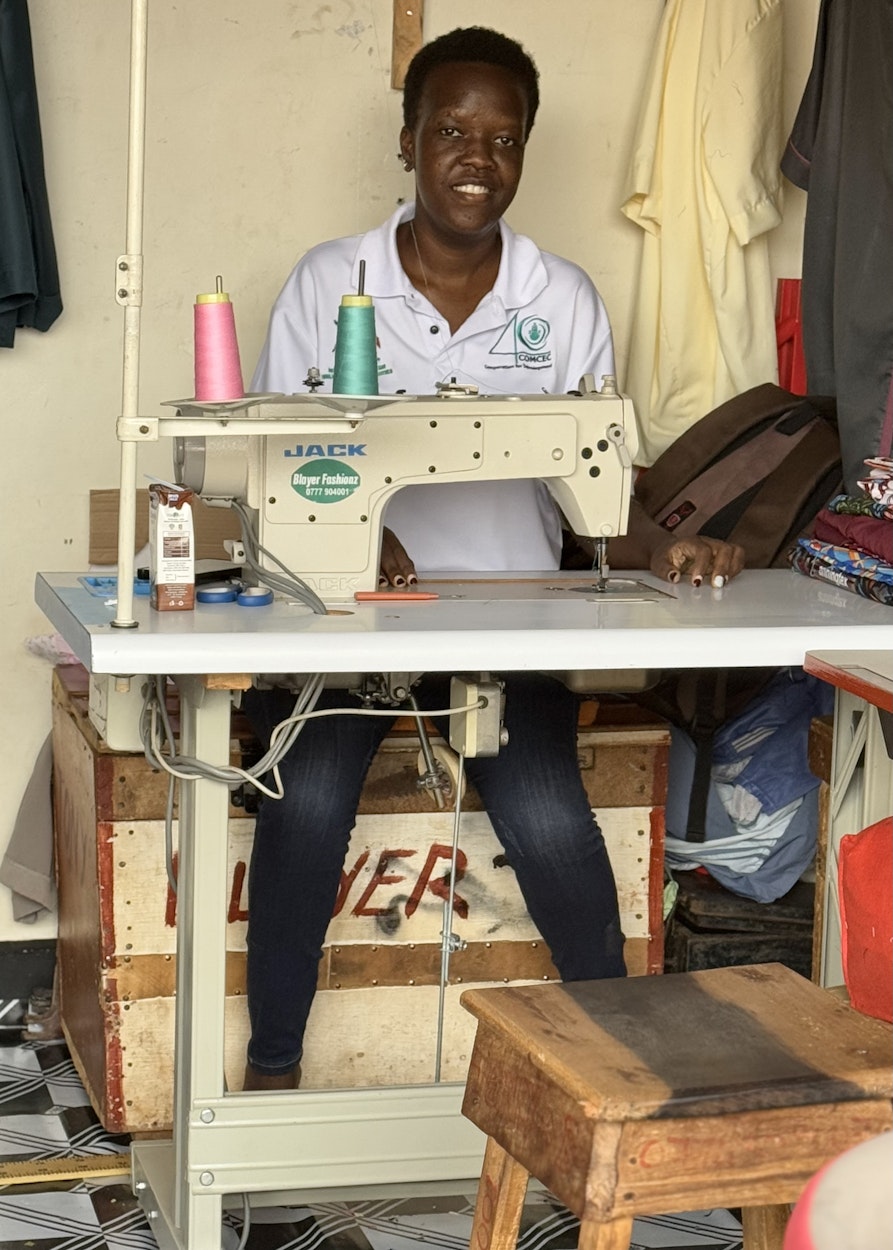
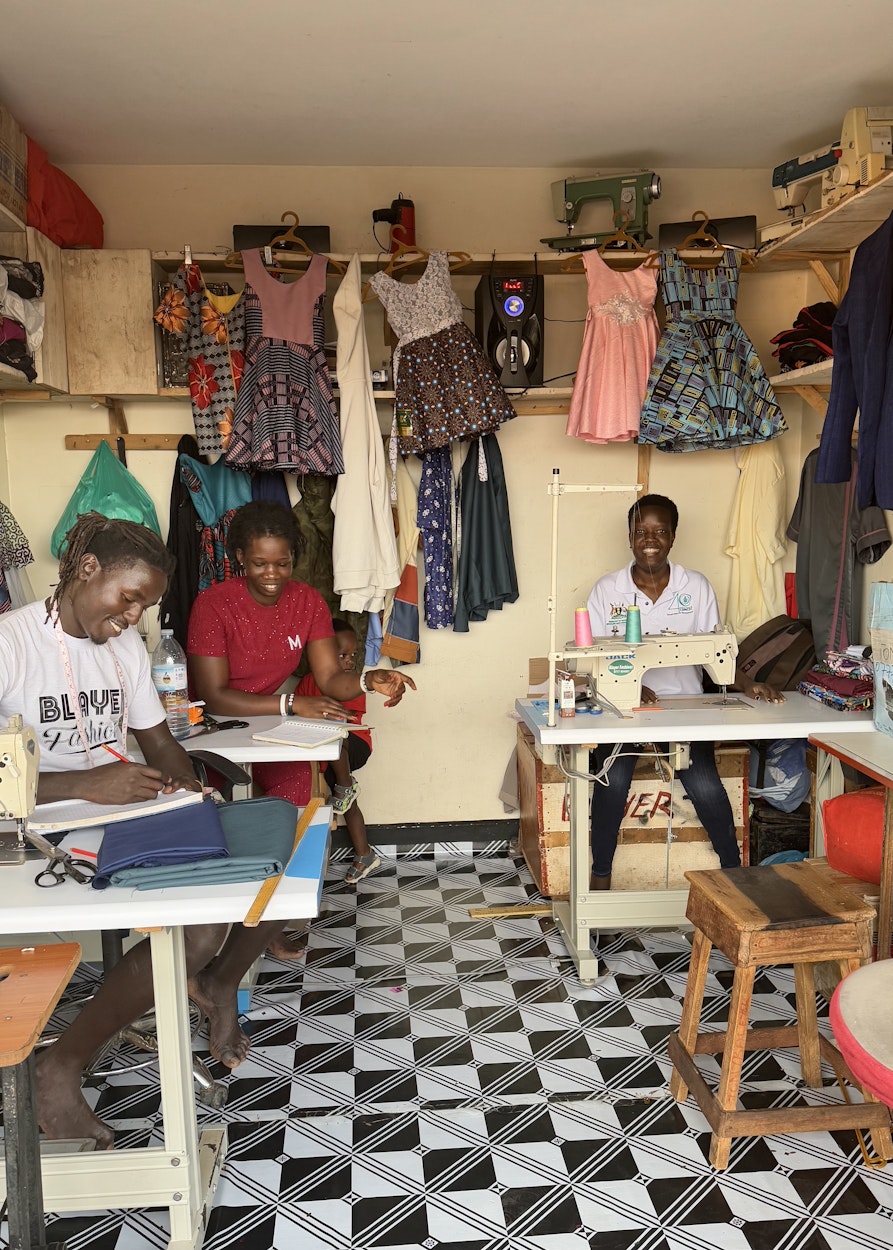
Fashion-Designerin wollte Sharon seit langem werden. Schritt für Schritt setzt sie ihren Traum um. Sie habe sich das Nähen selbst beigebracht und werde besser und besser, erzählt sie. Die meisten ihrer Stoffe färbt und bedruckt sie per Hand mit entsprechenden Pflanzen, Sharon arbeitet vor allem mit Rest- und Secondhandstoffen. Ihre Brand Ajura hat sie letztes Jahr gelauncht, Ajura sei ihr Spitzname, sagt Sharon lächelnd und bedeute u. a. „hard working“. Sharon ist ihr englischer Name, Anena ihr Acholi-Name, die Acholi People sind vor allem in Norduganda beheimatet. Bei der Geburt bekomme man beide Namen, erklärt sie.
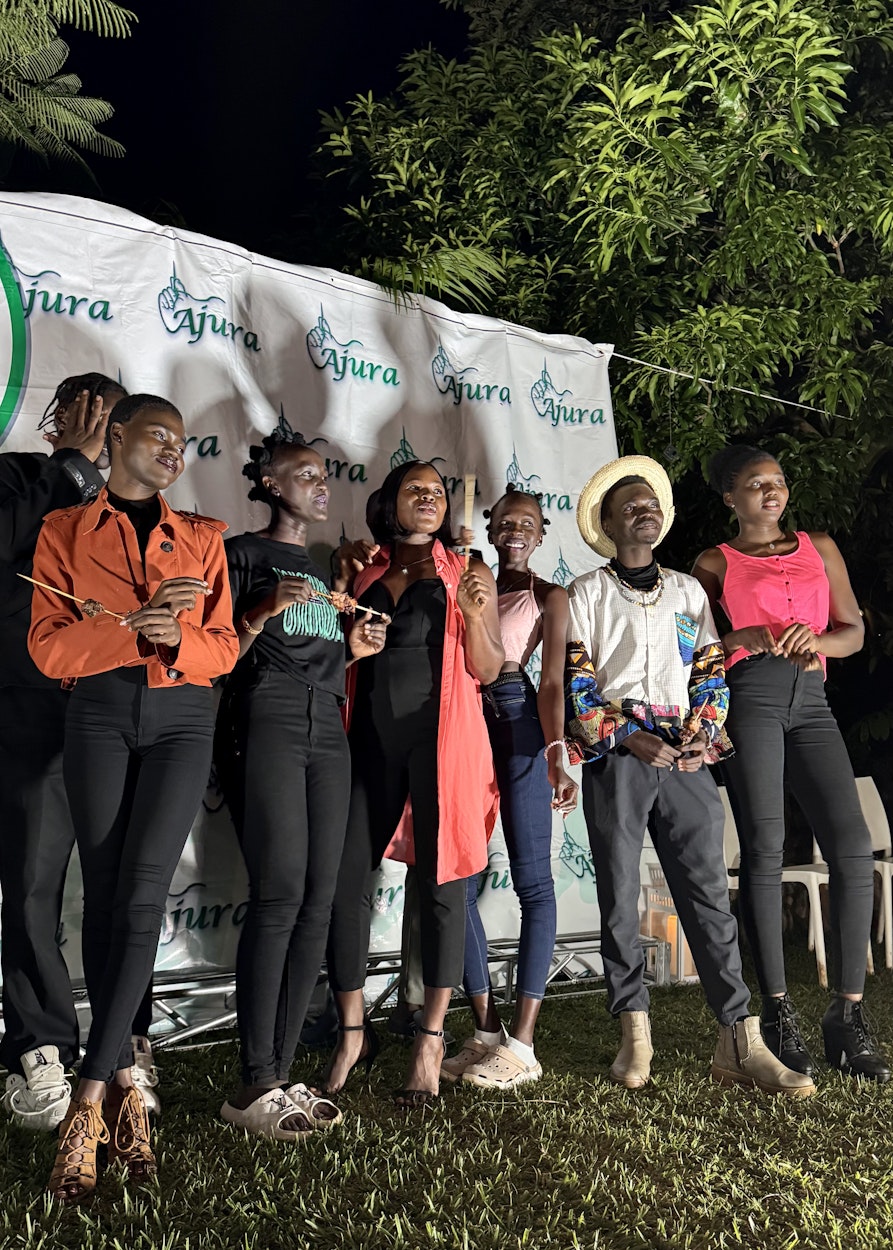
Der Tag ihrer Show ist gekommen. Sharon ist ein wenig aufgeregt, voller Vorfreude, viel ist noch bis zum Schluss zu erledigen. Sie hat einen besonderen Ort in Gulu ausgesucht, das Forrest Hill wurde erst vor kurzem eröffnet, der große Park, der die Anlage umgibt, ist etwas Neues für die Stadt. Ein afro-kanadischer Anwalt aus Gulu hat das Anwesen gekauft und möchte daraus einen Ort machen, der den Einwohner*innen zeigen soll, wie nachhaltig und schön Natur und Business zusammengehen können.
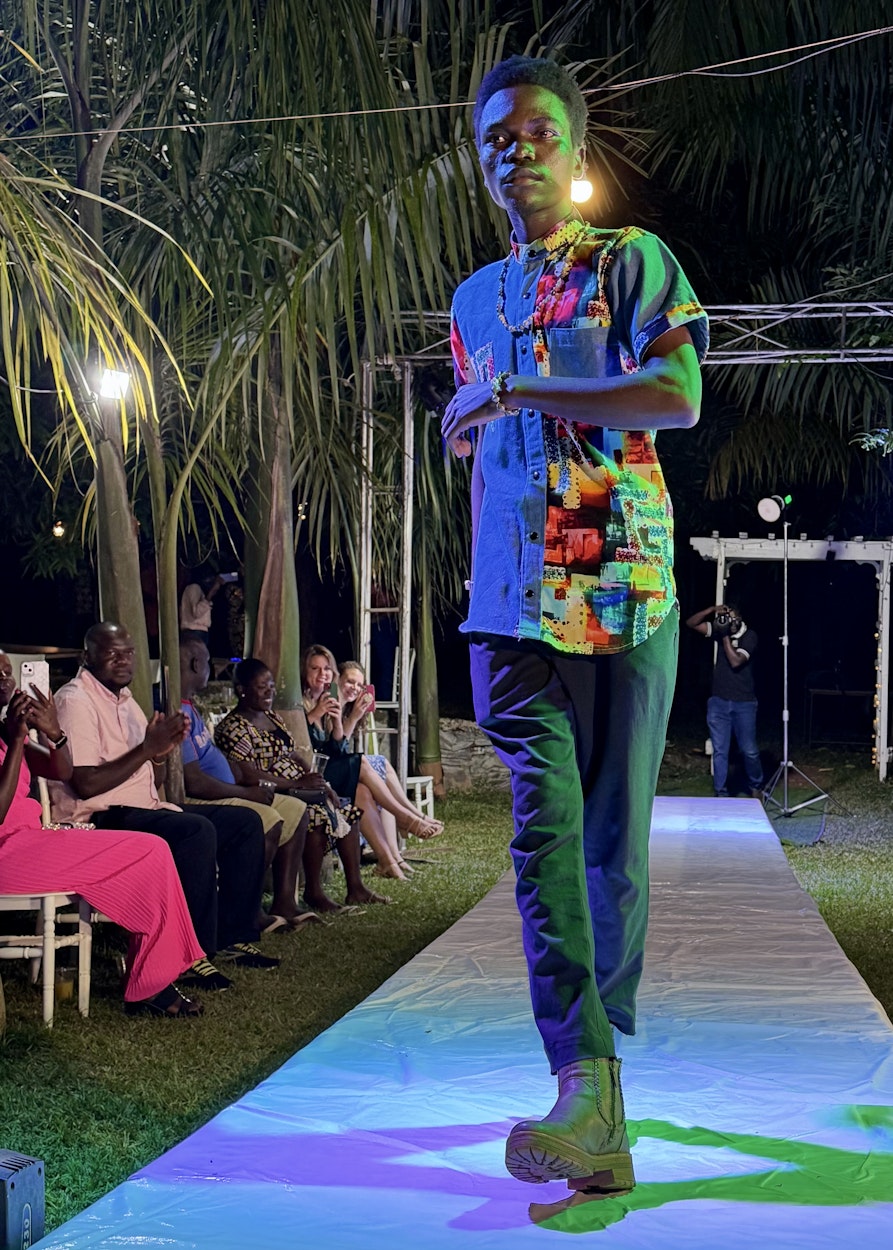
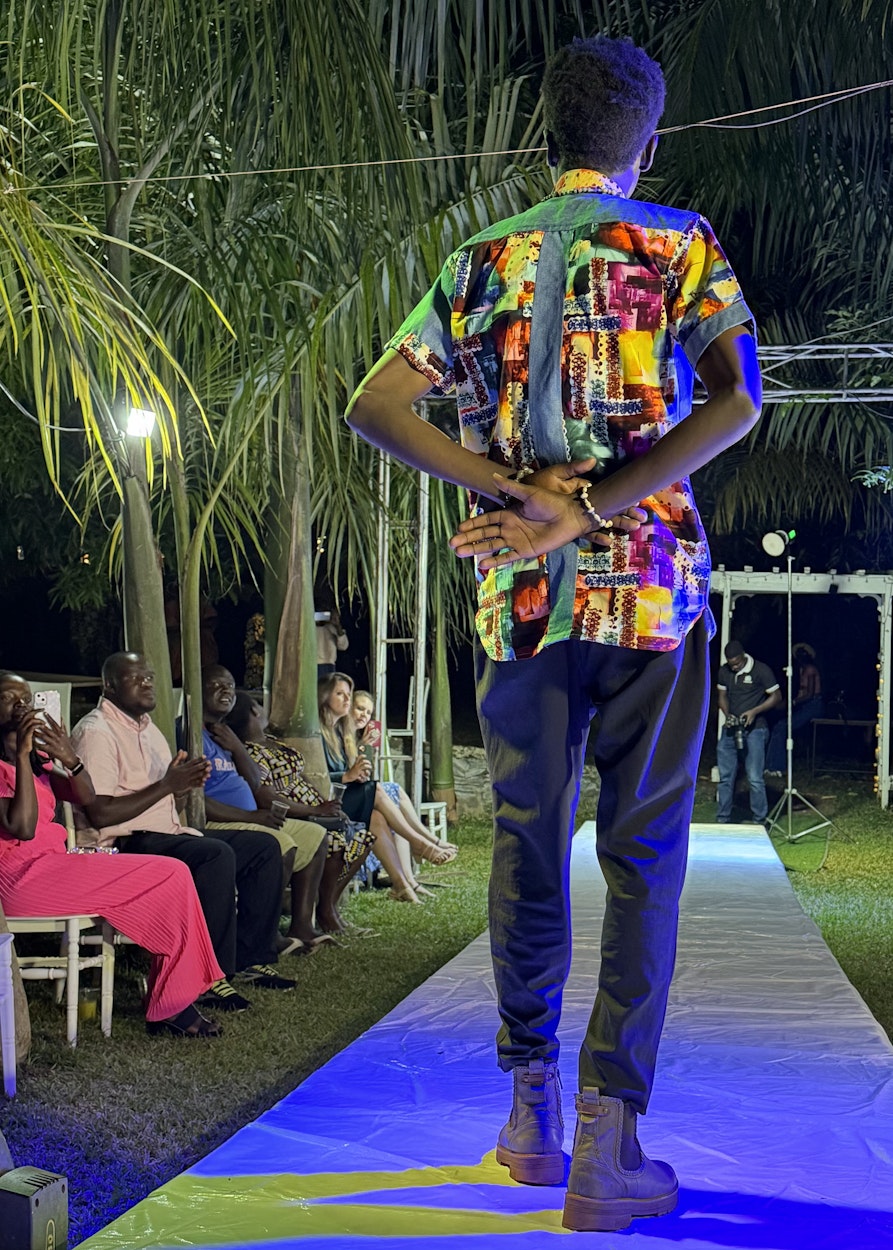
Der Abend war nicht nur liebevoll kuratiert, sondern auch sehr informativ und vor allem war er ein Event des Netzwerkens. Die Kombination von Ernsthaftigkeit und Leichtigkeit in der Gestaltung der Veranstaltung war berührend. In drei Durchgängen hat Sharon ihre Models auf den Laufsteg geschickt, insgesamt waren es 15 Designs, alles Prototypen, die man sich dann in verschiedenen Größen, Stoffen und Prints anfertigen lassen kann. Nach jedem Durchgang wurden die Entwürfe kurz erklärt und die Besucher*innen aufgefordert, sich neben das Model zu stellen, wenn man am entsprechenden Stück interessiert war. Ich habe ein Hemd gekauft, gefertigt aus Jeansresten und einem bunten Baumwoll-Reststoff.
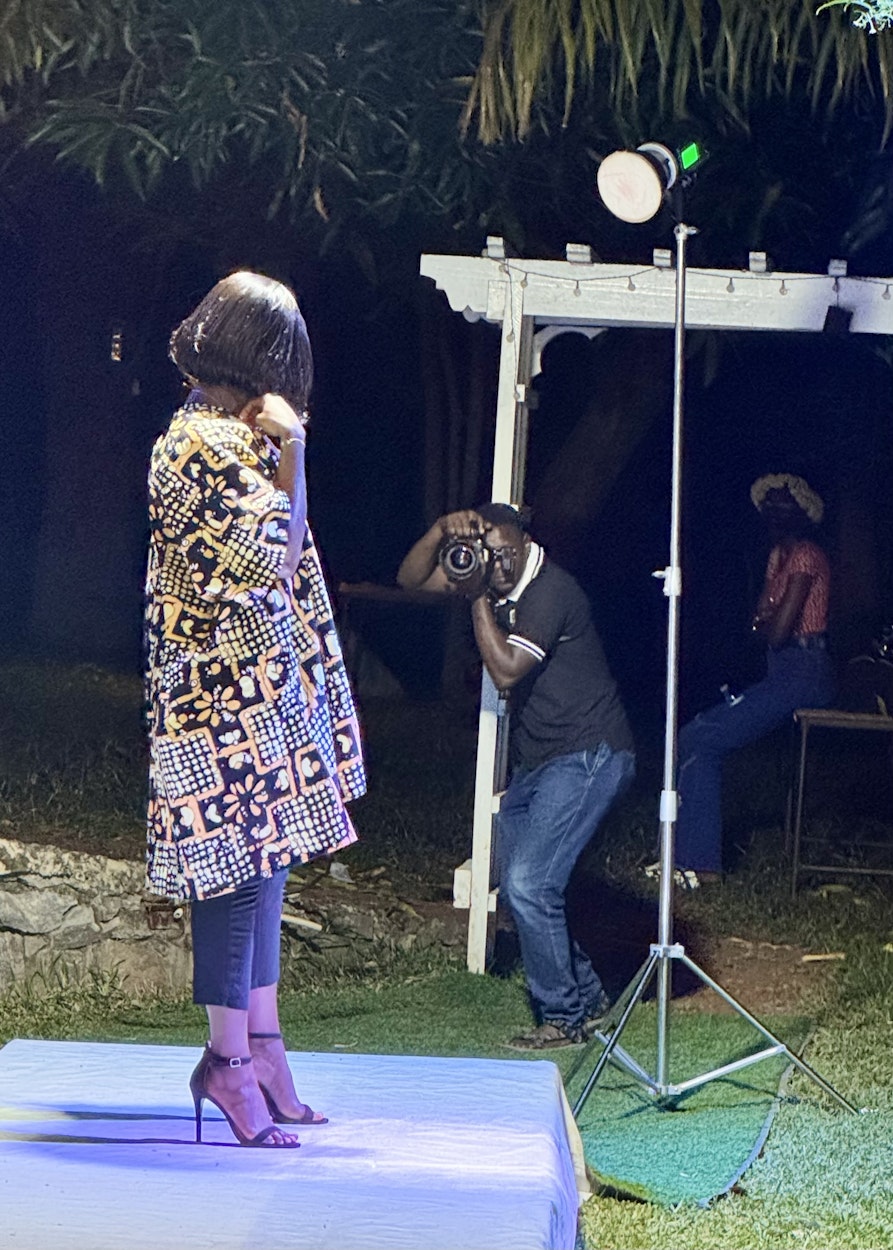
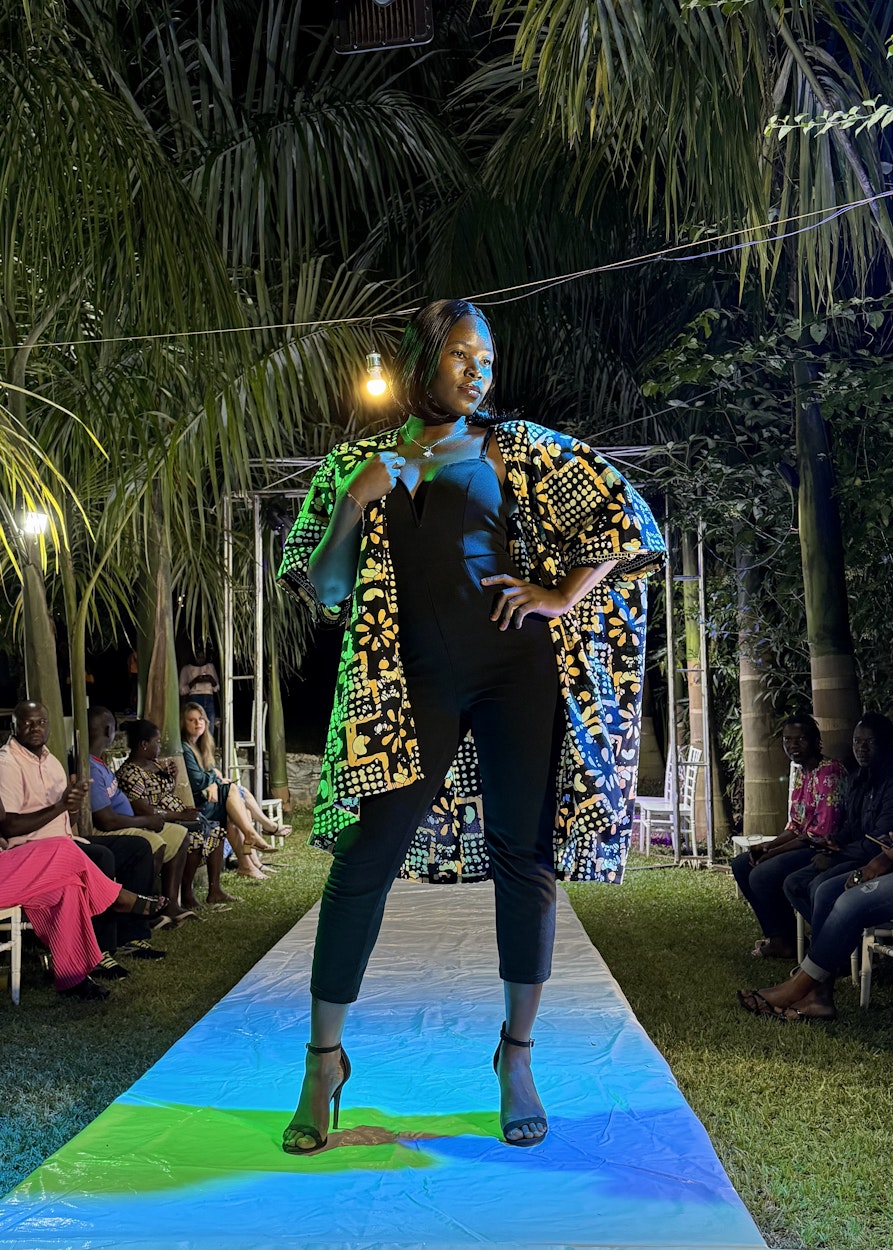
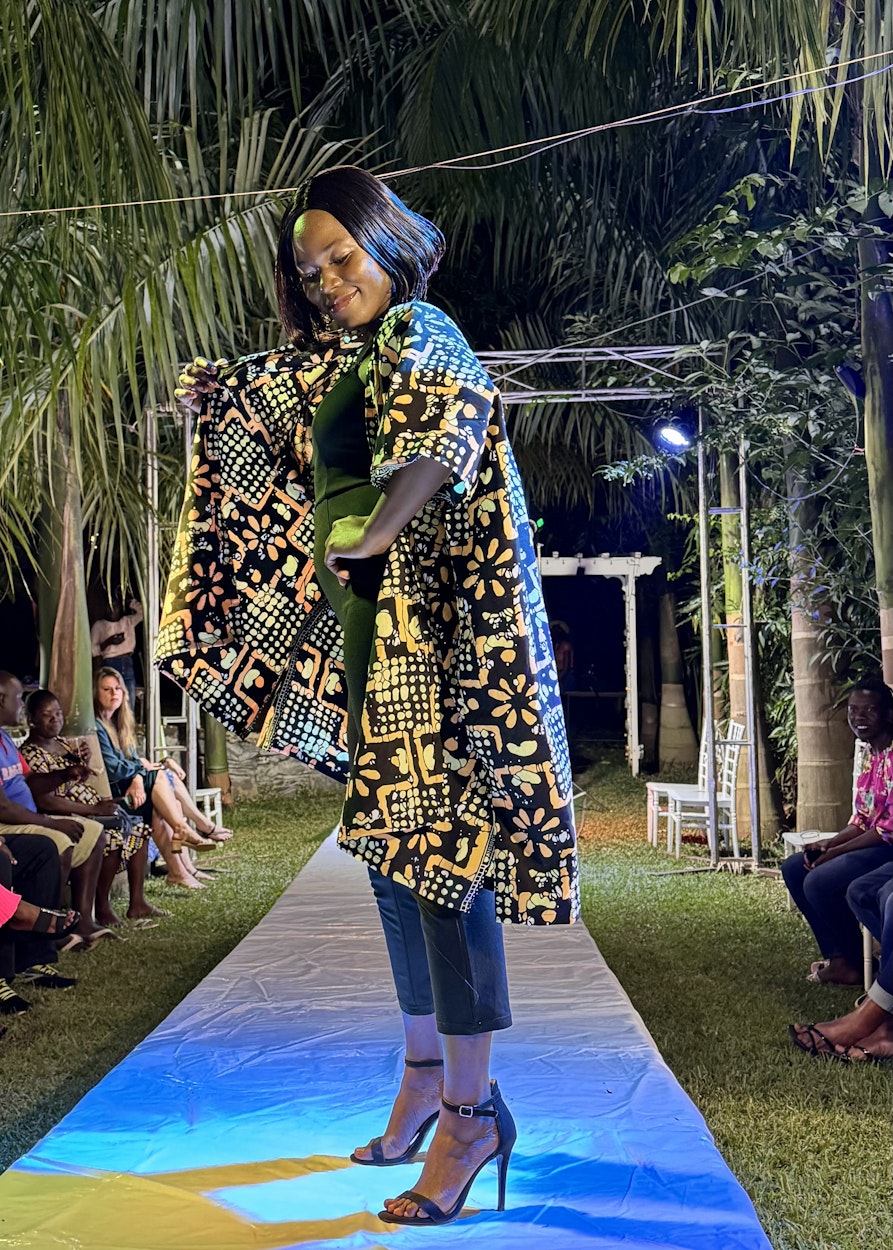
Der Abend war für uns alle eine besondere Erfahrung und Sharon sehr zufrieden mit dem Ergebnis. Eine Tasche mit hochwertigen Kosmetikproben der Bozner Parfümerie Thaler, die Flora Kaspareth gespendet hat, wurde zur Freude der Models unter ihnen verteilt. An dieser Stelle möchte ich mich nochmals herzlich bei Flora bedanken.
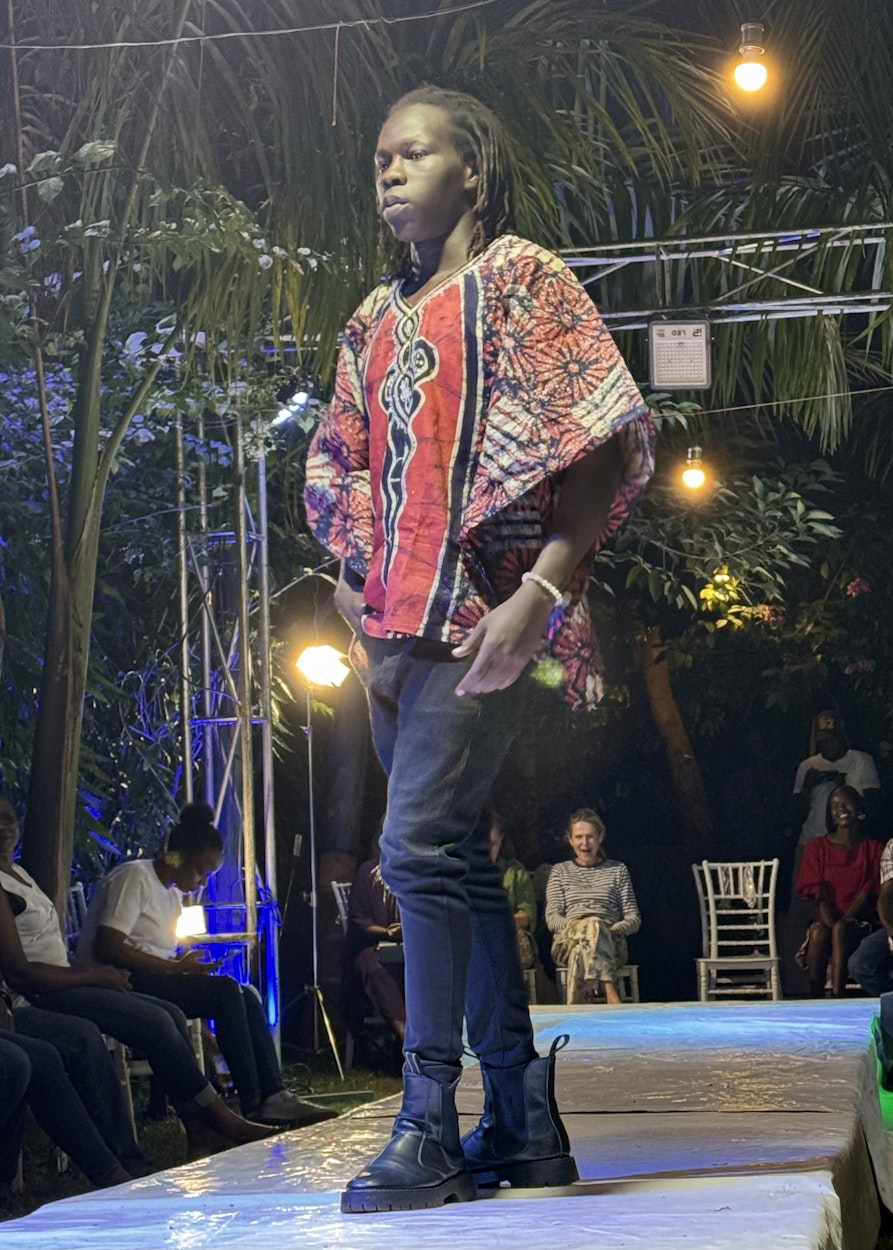
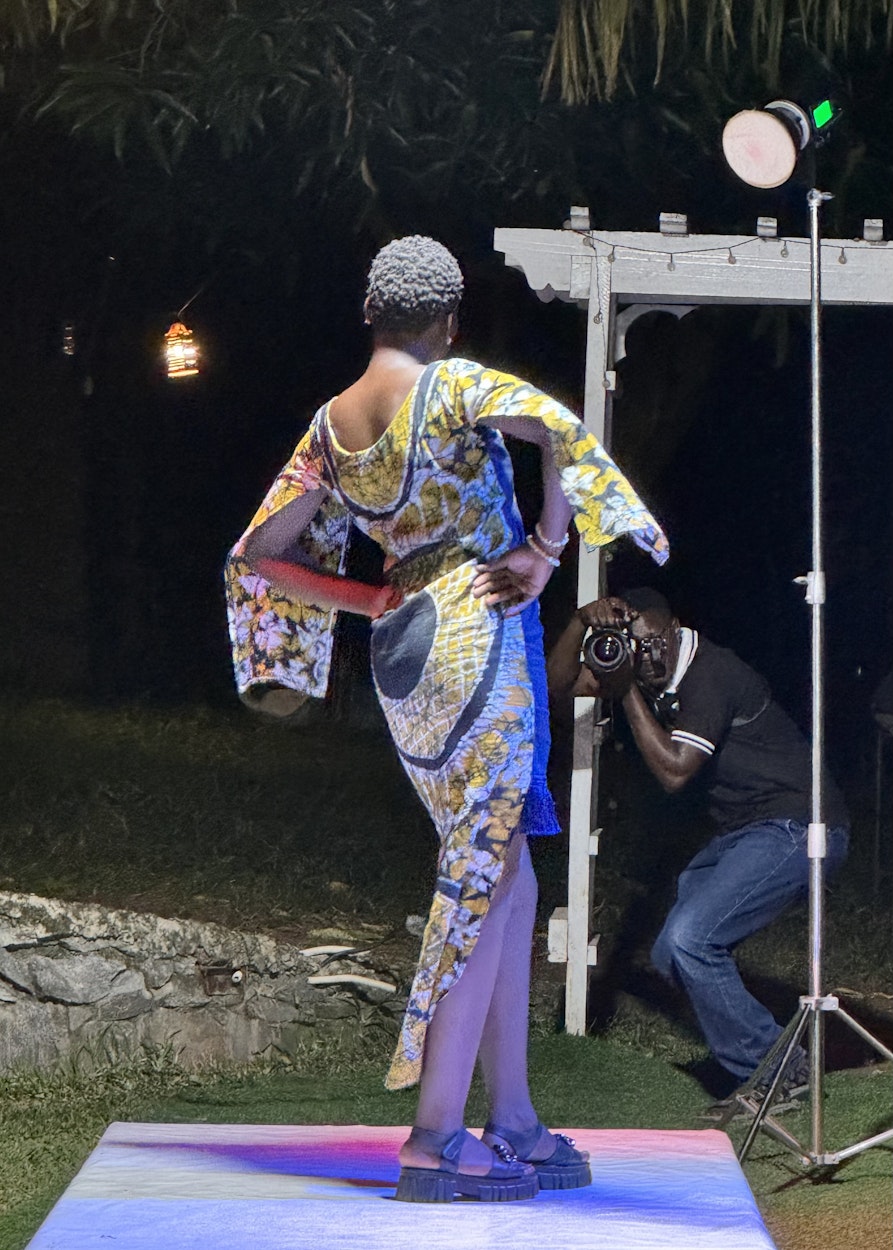
Zwei Tage später habe ich Sharon zum Interview getroffen.
Part of the collection I had on the runway for 2025 adds stories that are related to African culture. Why I say that is because the fabrics are hand printed, in this particular case they were printed by women in Gulu, and each of these women have their own stories. And when you buy these items, you are also supporting local artisans and sending out their stories through my designs. The stories are written very briefly on a small tag.
Where do you stand with your brand at this very moment?
Looking back, I see the progress I have made as a designer. Launching the brand last year was a huge success for me and this year having people pay to come to the show to be a part of the brand makes me very happy. I see Ajura going national and international in the next few years. When I look at my designs, they are captivating, especially with the eco printing. I use leaves that local people use in different ways. There is a particular leaf from northern Uganda, the shea leaf, which is also used in cosmetics as shea butter, people know it and it has a good marketing effect. These leaves tell different stories that people can relate to. It is not only shea leaves that I work with, I also use some other leaves, I also use resources that other regions, tribes have to create fashion and tell their stories.

How is the feedback?
The feedback is good and growing. Our designs are unique in different ways, we are not designing like other designers in the country. I look for elegance in simplicity and that is what people notice and like.
How important is fashion to people here?
People here like to look good. They would actually pay for something good if they see it. And then those who have their own designs in their head they will get the fabric and then come to you and let you make that piece. So people love fashion, especially when it comes to parties, you see people dressing up a lot. That alone is enough to show us that our fashion industry is on the right track.
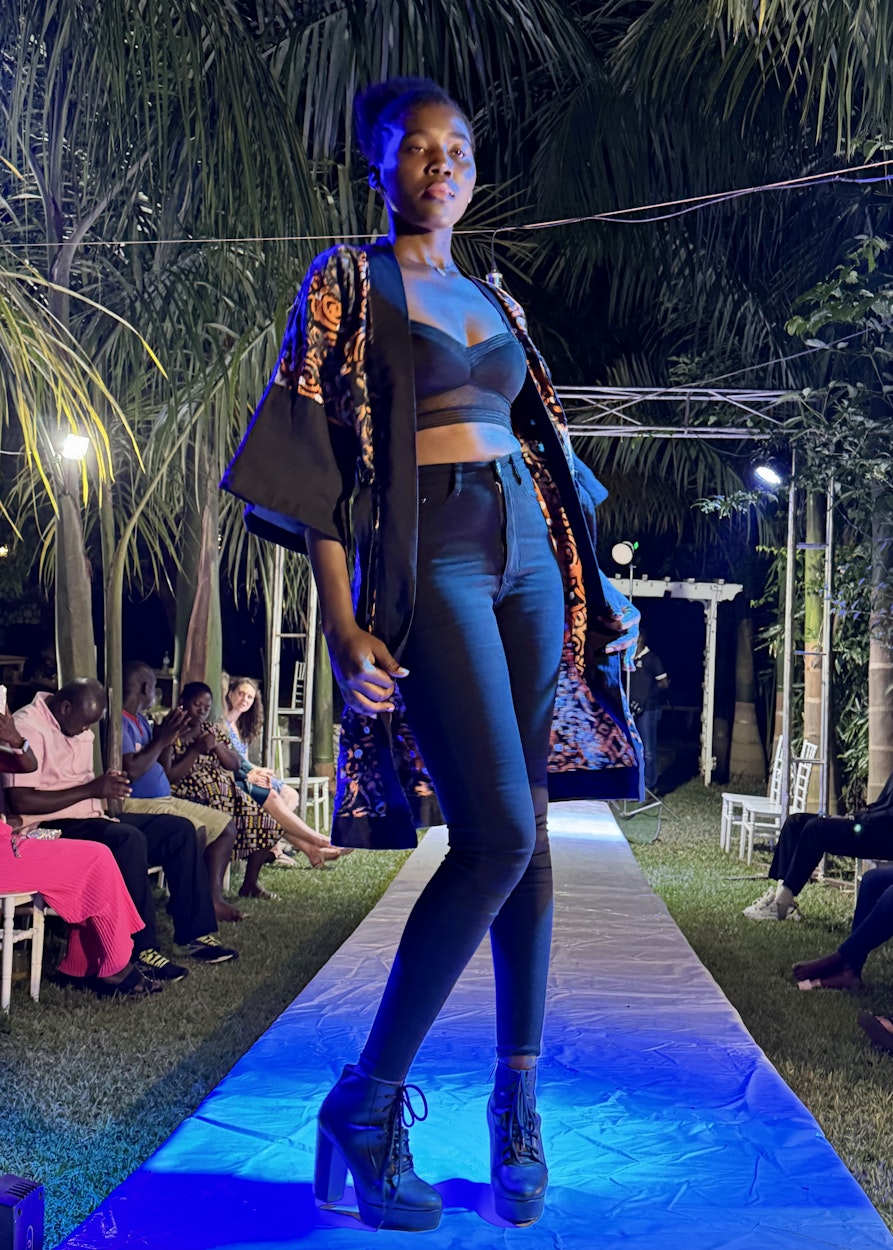
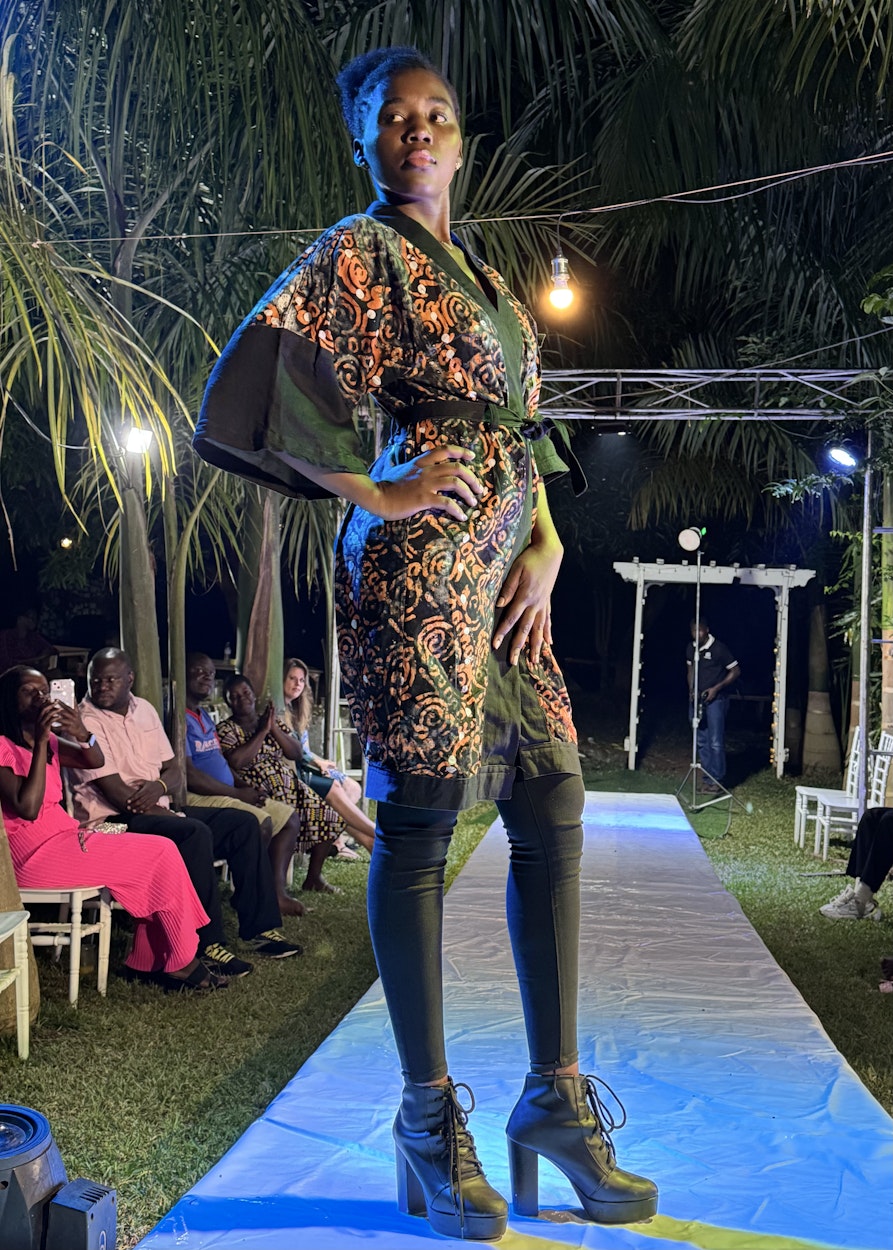
It's my first time here and I couldn't stop looking at the people and how they are dressed. So individual and cool. The style in our cities is pretty boring compared to this. There seems to be a global style, especially for young people, they just look alike. And here everyone looks different...
Here, people like to wear what they feel they can relate to. Most of them like casual wear, but they dress it up a bit in their own way. Either with shoes or hairstyles, small handbags or African backpacks. When I feel down, I wear a big t-shirt and a simple skirt or jeans. But when I feel like I have the right energy, I dress up.
Have you tried letting clothes lift you up?
I have tried, but I usually find that the mood refuses to change. I can't really express fashion when my mood is down.
You work with leftover fabrics and secondhand clothes. Is that a common thing here?
I can't say I'm a pioneer, because everything I'm doing here has been done before. Maybe the creativity I put into used clothes is not so common and makes a big difference. I use all my scraps and make something out of them. It could be a bag or a skirt. The problem with secondhand clothing is growing because there is so much coming in with decreasing quality. A lot of it ends up in landfills.
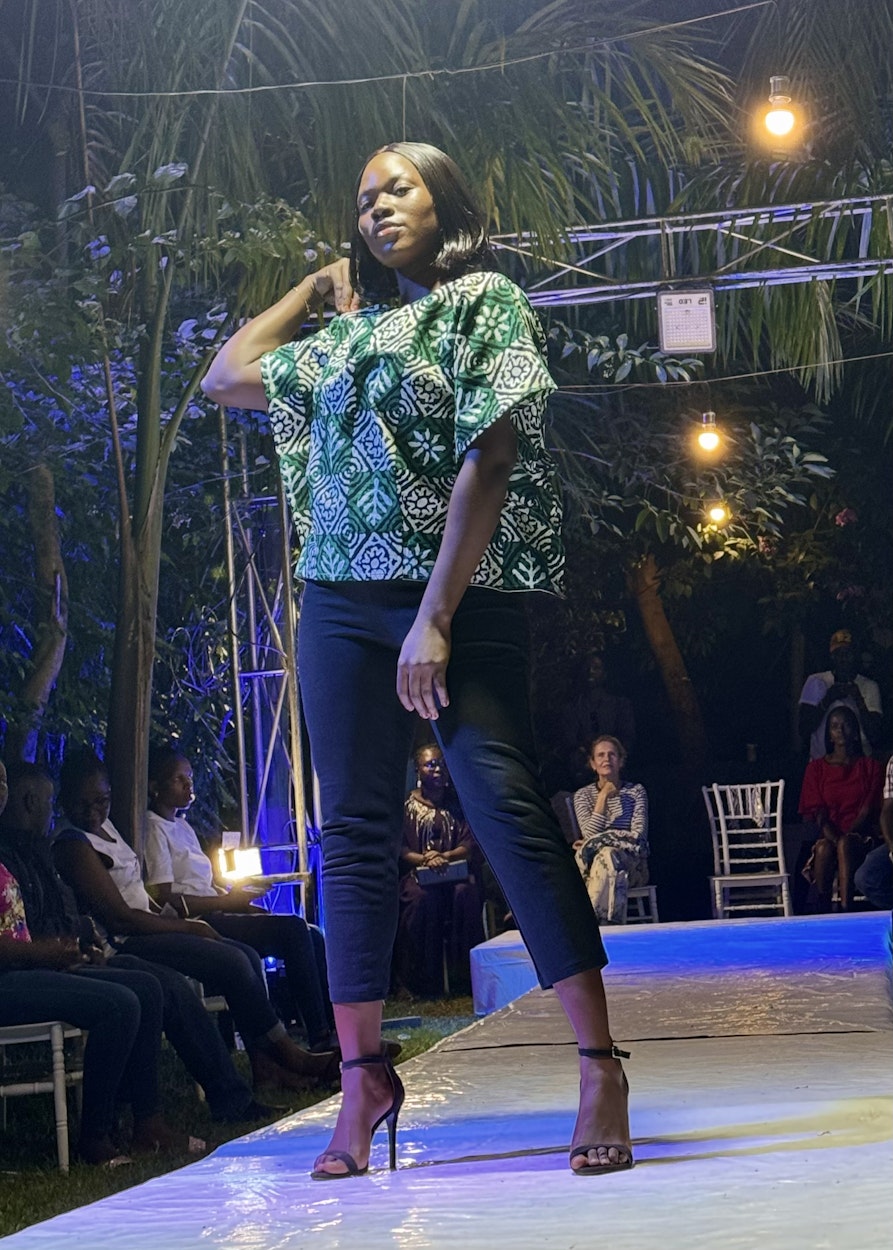
Do you also have local secondhand?
There is some local secondhand, but it is put into the secondhand that comes in. There is a tendency among our people that they don't want to wear what someone else here has worn. If I have something I don't want anymore, I have to mix it with the other secondhand. And if you give it a twist, people will buy it. Then it is upcycled and they like it.
Is your fashion affordable for locals?
Yes, it is affordable. But I also want to create a line that people in the local villages can buy. It has to be much cheaper. This is going to be a lot of work for me because I have to collect used clothes and improve them and put them in boxes so that entrepreneurs from the villages can buy them and make some profit as well.
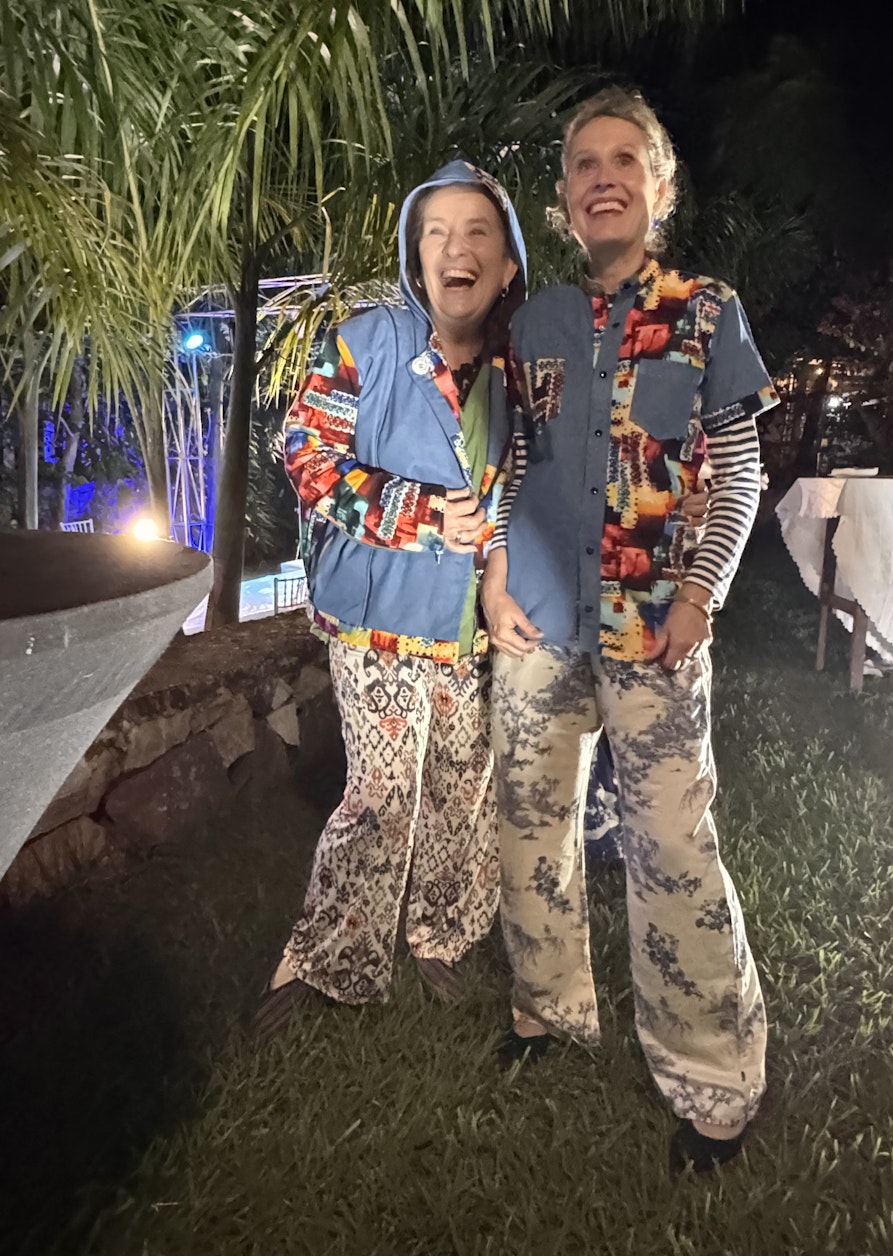
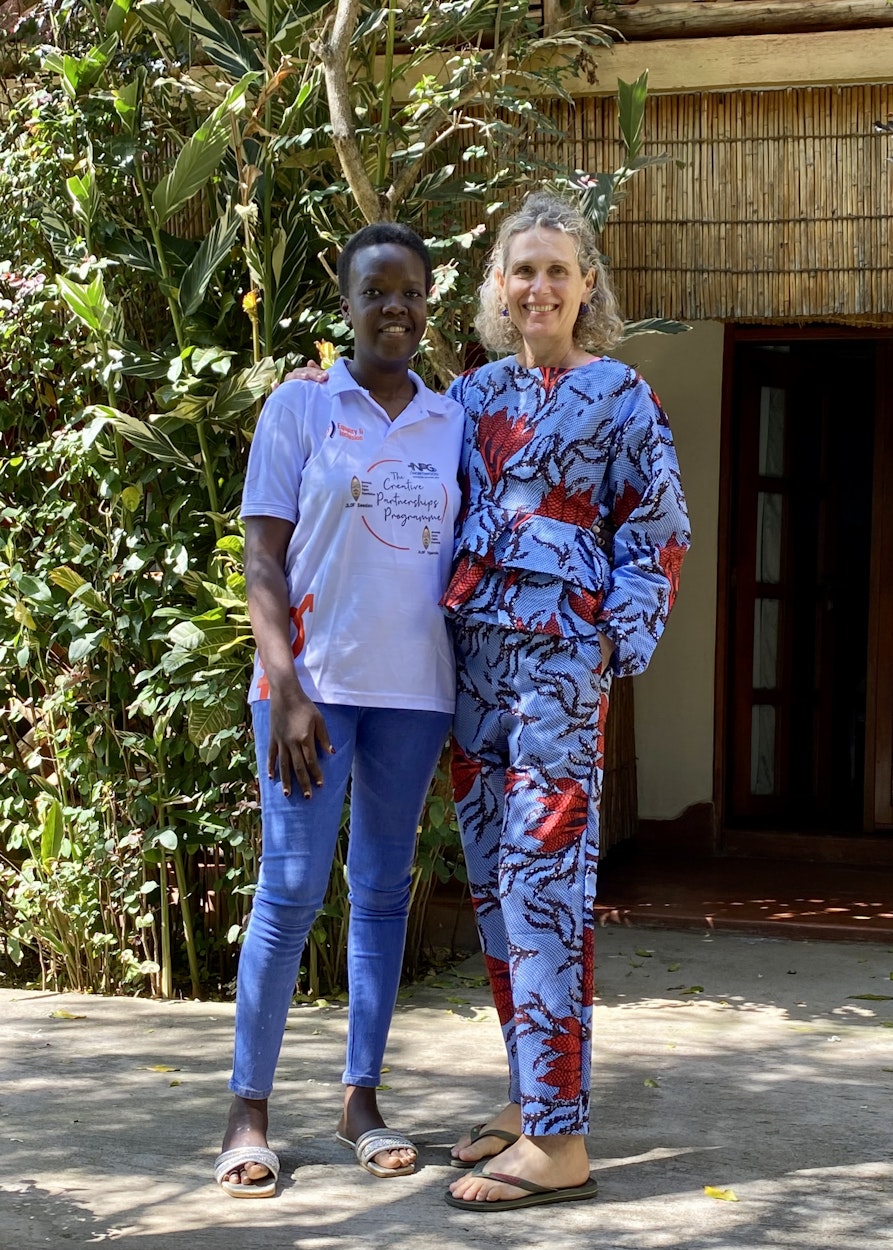
What are the next steps, Sharon?
I want to focus more on eco-printing, I want to create more awareness in that direction so that people will love and embrace it more. I have a mentor who is really interested in printing on t-shirts and she wants to promote it. It would be great for my brand if I could do that. And as a designer looking at the community, one thing I want to do in the future is to have something like a thrift store where people can come and buy used stuff, the same used stuff they don't want, but improved and looking better and at a cheaper price.
Wenn ihr Interesse an Sharons Designs habt – und das würde sie sehr freuen! – meldet euch bei ihr via Instagram oder via E-Mail anenasharon22@gmail.com.
Hier die Links zu den Artikeln mit Sharon, die bereits erschienen sind: Eins, zwei, drei und vier.
Supported by Kauri Store (M), Oscalito (L) und meiner Freundin Kristin. Wenn ihr diesen Blog auch unterstützen möchtet, gibt’s hier alle Infos.